The Sites That Mean the Most to Us
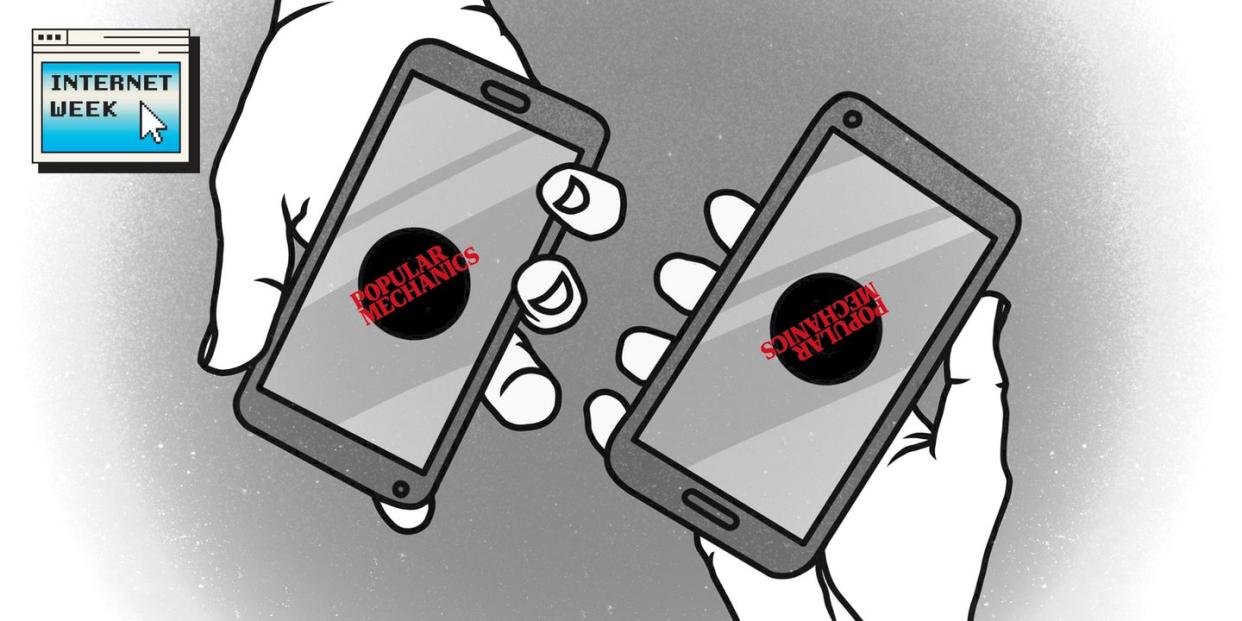
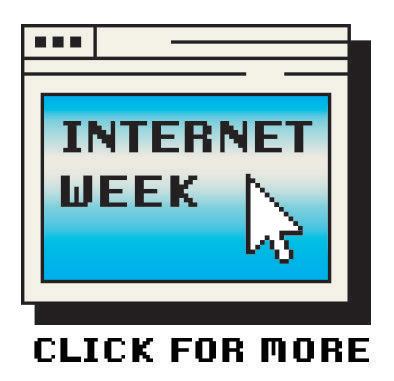
All week long, we’ve celebrated 50 years of the internet as we know it (and we know it well). We’ve explored the brightest, darkest, weirdest, and horniest corners of the web, and told the complete story of this cursed thing we hate to love through its 50 most important sites. Now, as we wrap up Internet Week, it’s time to get personal.
Here, the editors of Popular Mechanics wax poetic on our all-time favorite websites—the ones that shaped our internet habits, perhaps changed our lives, or simply served as excellent time-wasters. Some are still active and bigger than ever, and some have long been lost to time. But they all mean something real to us, and the internet simply wouldn’t be the same without them.
The Email Game
It would start with your oldest email first—full-screen, with a text box to write your response, same as any browser-based email client—but with a timer in the corner counting down every second you lingered. You could Reply, Archive, Reply and Archive, or Skip to move to your next message. Choose that last option too many times, though, and the smiley face in the other corner would get sad, mourning the productivity you’ve lost to not dealing with your inbox. Then, on to the next, and all the way through your inbox. No notifications. No way to compose a new message. Just respond to your emails, one-by-one, until you’re caught up. If intermittently checking your inbox is a half-assed walk-run that I would make last all day, the Email Game was a decision-making sprint into a headspace where you could actually focus on what needed to get done. Gmail, Outlook, any developers out there listening: Bring this back. The Email Game was the closest the internet got to fixing email. —Alexander George, Editor-in-Chief
eBay
My boyfriend bought a pair of used, made-in-the-USA, black Converse low tops for $10 at a thrift store. He took a few shoddy pics of them, threw them up on eBay, and a week later, sold them for $395. I can remember staying up late to watch the bidding war in its final hour. After that, we got the itch and hunted for sneakers like it was our job (at one point we had over 400 pairs of NOS vintage Vans and Converse stacked in our garage).
Now, after nearly 15 years of slinging everything from vintage T-shirts to ephemera to oddball souvenirs, our side business has paid for our vacations, boosted our kid’s college fund, and allowed us to knock a few years off our mortgage. It’s not without its headaches, though—182 million active buyers worldwide (according to eBay) means you’re bound to get scammed at some point. —Jen Sherry, Associate Test Director
Dansm’s Guitar Site
Learning to play guitar in the mid to late ‘90s meant you either sat around in a room with other players, or you dialed up Dan Smith’s tutorial website. Long before online learning and YouTube tutorials, this college kid coded rudimentary web pages using Notepad.exe and taught you the basics: chords, techniques, and even a fair bit of music theory. Smith also offered some of the earliest—and useful—guitar tablature. I remember printing a heck of a lot of those pages in my own college’s computer lab—I didn’t even have a computer in my apartment back then. The site is still parked, though, gloriously, hasn’t been refreshed in 20 years. —Jeff Dengate, Senior Test Editor and Runner’s World Runner-in-Chief
Gumtree
Mostly on a whim I moved to London in 2001, where I spent the bulk of the next decade. I was 24, and the day I landed, I knew a sum total of three people in the city. Gumtree became my lifeline. A mashup of Craigslist, Yelp, and Match, the site was mainly visited by young expats new to the British capitol. I bought a TV from an Aussie who was headed back to Sydney, went out with Irish and South Africans I connected with on the site’s dating section, and met lifelong friends in the aptly named, but slightly embarrassing “seeking friends” area. One of them, a Kiwi who returned to her native Aukland about the same time I returned to the States, is coming to the U.S. next year with her family to vacation with mine. —Tracy Middleton, Senior Features Editor

Deadspin
Unlike other defunct sites on this list, Deadspin still exists, but only in name. Just this week, the beloved, long-running blog’s new parent company—a soulless private equity firm with a history of snatching up and gutting media properties to make a quick buck—issued an edict to editors to “stick to sports” and cool it with all other superfluous content, prompting the entire staff to quit in protest—one last glorious bird flip for a site that only knew how to operate with its middle finger raised.
It’s true that Deadspin earned its bones by delivering sports news without access, favor, or discretion, as its tagline touted. And indeed, the murderer’s row of voices it cultivated and propelled to internet stardom, like the inimitable Drew Magary, and the astounding stories it consistently broke, like uncovering the improbable truth about a college football star’s fake dead girlfriend, made Deadspin a Mecca for fans who preferred their sports coverage free of the bullshit found elsewhere.
But the groundbreaking site never stayed inside that box; in the Trump era, there was often no better place to find incisive political and cultural insight than a repository for leaked photos of athletes’ dongs. To tell Deadspin to merely “stick to sports” is to cut off its head, bleed out its essence, and kill the very thing that made it the most vital site on the internet, full stop.
Deadspin is dead. Long live Deadspin. —Andrew Daniels, How-To Editor
WrestleCrap
The best memories I have with the internet comes from wormholes of information—places you go where it just feeds into what makes you curious or happy. Before you know it, you’ve wasted three hours. WrestleCrap did just that for me when I discovered it in the early 2000s. It has the definite feel of a guy creating a website simply because he wanted to, without real care for design or pleasure. But it gives you what you came for: the very worst in professional wrestling.
As a child, I was blind to a lot of the terrible storylines and characters that filled hours of television time for promotions like the WWE and WCW. Wrestlecrap’s RD Reynolds and his merry brand of contributors proudly mocked all that’s dumb (and oddly enjoyable) about the sport. Bonus points go to the site for being an early adopter of making audio shows and putting them up for free. Or, as we know it today, a podcast. —Brian Dalek, Director of Content Operations
Hampster Dance
In addition to the Civil War and verb conjugation, part of my seventh-grade curriculum focused on advancing our computer literacy. In between typing games to acquaint ourselves with the QWERTY keyboard and exercises to learn how to use something called a “search engine,” we’d try to sneak in clicks to other websites.
While some of us lucky students had 14.4 kbit/s or 28.8 kbit/s modems at home, for many, this was our first real experience with high-speed internet. Here’s the thing about middle school students: They like to push limits.
By the spring of 1999, we had a grasp of what we could get away with on the year-old desktops. We could replace the cloudy Windows 95 background with a photo of Stone Cold Steve Austin, but trying to vote for your favorite TRL video would cause some serious lag.
When the Hampster Dance craze began sweeping the nation, it represented a new challenge. In the age before tabs, we knew one Netscape Navigator window could handle the page. But what if we opened multiple windows of the bubbly rodents? What if we set the background to the gif of the spinning orange one? And if every computer was tied up processing the walking brown one, would we have to do work that day?
We succeeded a few times–it was just silly, harmless fun. The Downingtown Area School District quickly caught on to what we and other students were doing, and stricter network guidelines were enacted (though some high schoolers found a way to hide a playable version of Quake II). In an age where toxic culture has become synonymous with the internet itself, it’s always refreshing to look back and remember when the most harm one could do online was look at a Geocities page. —Derek Call, Video Producer
Rotten
When I discovered the internet in the early 1990s, I thought—wholeheartedly believed—its powers of connection and ability to distribute knowledge so easily would usher in peace and understanding throughout the world. But not long after its launch in 1996, I discovered Rotten.com and I realized such easy connection and distribution could have a dark side—a very dark side. As in, pictures of murder and suicide victims dark.
Outside of the Wayback Machine, Rotten no longer exists today in a meaningful way, but at its height—when many fewer people were online—it was pulling in over 200,000 visitors a day, which means more people than I’m comfortable thinking about have a disturbing itch that I never considered—but should have—when I first logged onto the ‘net and saw nothing but peace, love, and understanding.
I loitered on Rotten more than I’m proud to admit. But doing so taught me that for all the light the internet has the potential to bring, it has equal or greater power to feed the very worst instincts of personkind. —Matt Phillips, Senior Test Editor
Flightradar24
Flightradar24, a continuous live map of all flights in the world, is a ballet of technology that’s equal parts inspiring and baffling. The way it works is aircraft ping space satellites for their location, an onboard ADS-B transponder reports that location, and Flightradar24 picks up those signals in real-time. While many know Flightradar24 for its meticulous ability to catalog sky dongs, there’s something endlessly fascinating about watching a world full of planes slowly making their way to far-flung destinations. —Darren Orf, Deputy Editor
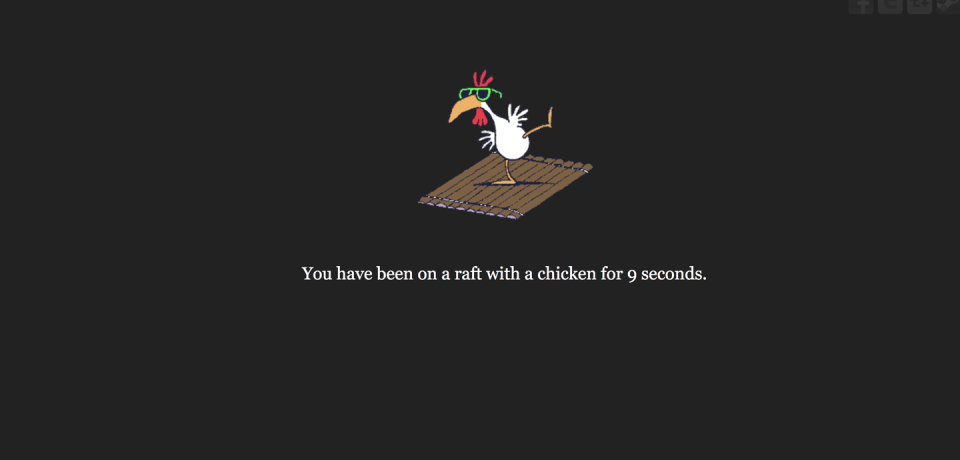
Chicken on a Raft
In its heyday, it was a joke, but now it’s countercultural. Chicken on a Raft’s simple premise—visitors listen to an endless sailor song about a nautical fowl and time their endurance, to no end or reward—flies in the face of the modern internet’s nefarious click farms and sponsored content. Chicken on a Raft hoards your attention without brain-addling tricks. It commands your focus through commitment, not endless stimuli. It announces it’s going to waste your time, and then does exactly that. You might have stayed with the chicken on a raft for a minute, or an hour, or like me and my numbskull middle school friends, several hours, but no matter how long you were asea, you always ended up asking that age-old internet question: What are we doing here? What are any of us doing here? —Tyler Daswick, Associate Features Editor
Athleticore
Before Strava kudos and KOMs, there was Athleticore—a simple, no-frills workout log. I started using it in college to record my running mileage and how I felt during workouts, but it soon became much more than that. It was a place where I could privately record all those endorphin-fueled musings and memorable long run conversations, or just get some headspace and let it all fly. Reliable and easy to use, it’s kept me coming back for years to build a log that I can look back on and reminisce (or cringe) about what I’ve written, but also use to remember my accomplishments and set new goals. —Morgan Petruny, Test Editor
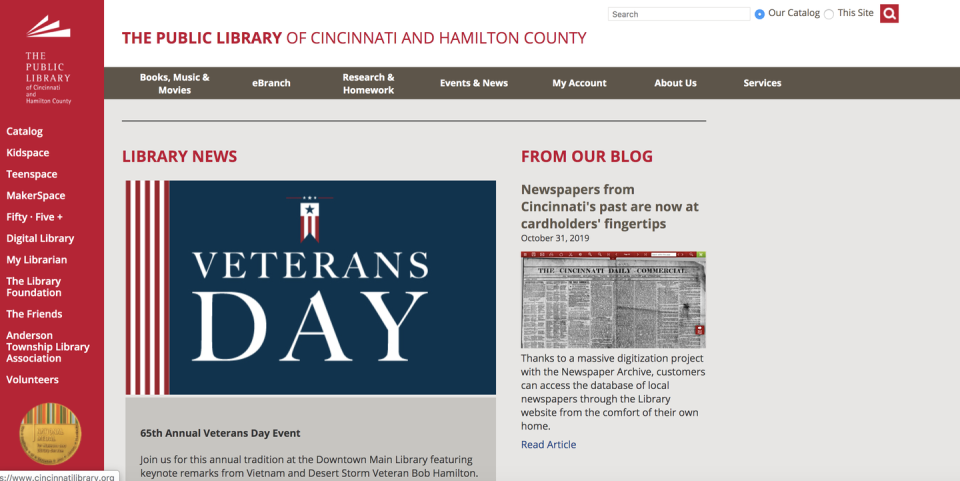
Cincinnati Library
For me, the internet has always been a tool to discover new information. Before I started regularly using Google, my go-to resource was my hometown’s library website, cincinnatilibrary.org. I remember visiting my local branch to search the offline catalog and hoping that the book I wanted was there and not at another location, so it was a big deal when the website came along. It became that much easier to find the books I was looking for or simply use one of the online reference databases the website provided access to and cut out the analog material altogether. I don’t live in Cincinnati anymore, but I still get a little thrill anytime I visit another public library’s website. It’s a reminder that a seemingly endless amount of information is just a few clicks away. —Adrienne Donica, Test Editor
Addicting Games
Remember taking a computer class in school? Remember how boring it was? Remember finishing your work as fast as possible so you could spend countless hours building a castle and defending it on a little site full of flash games? Me too. Addicting Games was my go-to time waster; the simplicity and fleeting nature of flash gaming was something only truly appreciated by the adolescent me. Now, I like to think I spend my time doing far more complex things, but I will always remember logging in and loading the site, then making sure my computers teacher didn’t see what I was really doing. (Still got an A.) —Trevor Raab, Photographer
AOL
The only sound more nostalgic to me than the buzzy, staticky beeps of the dialup tone is the male greeting, “Welcome! You’ve got mail.” This was the symphony of signing on to America Online—or AOL as we called it—and at the ripe old age of 10, this symbolized the very new, yet indispensable connection to the outside world. While yes, I occasionally used AOL email, I was really there immediately after school and late into the night to chat with the friends on my Buddy List. I only rarely used the search function to look up HTML code so I could ~.:*customize*:.~ my AOL profile and Away Messages with fonts and colors. While the seven-step logon process seemed to take at least five minutes (an actual eternity by today’s internet standards), that greeting, and the expansive realm of AOL, was worth the wait. —Molly Ritterbeck, Health & Fitness Director
Limewire
In my early high school days, finding new music … kinda sucked. I’d have to schlep down to the mall and park myself at the lone pair of listening headphones in FYE, where I could hear a five-second snippet of a song and decide if it was worth plunking down my babysitting money for the whole album.
Until Limewire came along. A vast new world of music opened up to me—now, I could download whatever songs I wanted. (Provided, of course, I lined up all my downloads overnight, since they each took about three hours apiece.) Sure, maybe they all came at vastly different volumes, making it hard to listen to in the car without blowing out your eardrums. And yeah, there was always the chance of infecting your computer with some sort of heinous virus. But what’s life without a little risk?
Since then, I’ve discovered worlds of new music, and been in the audience at literally hundreds of shows. My Spotify Premium subscription has taken over as my gateway to new music. It’s so much better than Limewire, in every way. (Except of course, the similarly dismal payouts for artists—but that’s another article entirely.) But I’ll never forget the first program that put me on the path to a lifetime of musical eclecticness. —Taylor Rojek, Associate Features Editor
LetsRun
As a runner, I go on LetsRun.com with the fascination of someone watching a tire fire from afar. I’d never throw a tire into that fire—I’m a lurker, not a poster—but I have wasted a lot of hours watching it burn. LetsRun is a forum about running where users post anonymously (and the web design looks straight out of 2008). It’s a source for all of the information about top professionals (most of it false), training advice (most of it nonsensical), and entirely unrelated topics (a thread titled “Down goes the Dow,” originally posted in August 2013, now has 1,750 pages of replies). Basically, it’s where skinny and non-confrontational runners go to don their keyboard tough-guy pants and duke it out with their contemporaries. There aren’t many of us, so even if LetsRun is a cesspool, it’s our cesspool. —Dan Roe, Test Editor
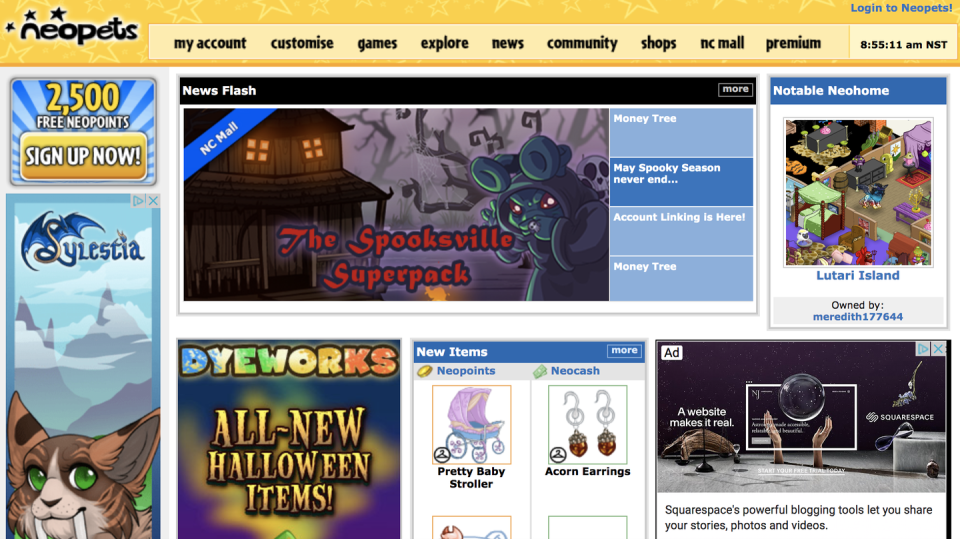
Neopets
Like any preteen in the early aughts, I had a Neopets account. At the time, it was the next-level Tamagotchi, so much less creepier—and quieter—than a Furby. You could create and adopt multiple pets and play games to collect Neopoints to buy them food or accessories. My pets—a purple monkey I adopted named “Pennsilove” and a penguin whose name and color I can’t recall at all—were constantly “starving” or “dying,” so I usually resorted to the free “Soup Kitchen” because the food was so expensive. The original site had its limitations, sure, but it was a great time-waster for an 11-year-old. And I remember being pretty decent at Meerca Chase, a game that was the Neopets version of Snake. —Amanda Furrer, Test Editor
Map of Metal
In order to understand why I like Map of Metal, I need to explain that my whole life up until becoming a photo editor was music. Even as a teenager, I spent every waking hour listening to music, seeing music, photographing music, discussing music, and buying music. I wasn’t exclusively into metal. In fact, I’d rank the genre fifth after hip hop, indie, garage rock, and punk rock. But, I liked learning about anything music-related, including the very specifically labeled subgenres of metal.
It seems silly to break down the categories about the subgenres, because real metalheads took it sooooo seriously, and you’d never want to be caught calling Saxon “Neo-classical Metal”—they’re clearly the New Wave of British Heavy Metal, or N.W.O.B.H.M. for short.
Plus, Map of Metal was the first site I remember seeing whose home page was an image. It seemed like a really ambitious site at the time—interactive map, icons, different fonts, song playlists per genre (perhaps early devs at Spotify noted this feature as well) and insets with videos. There are others like it now, but to me, this was the first and the best. —Amy Wolff, Photo Director
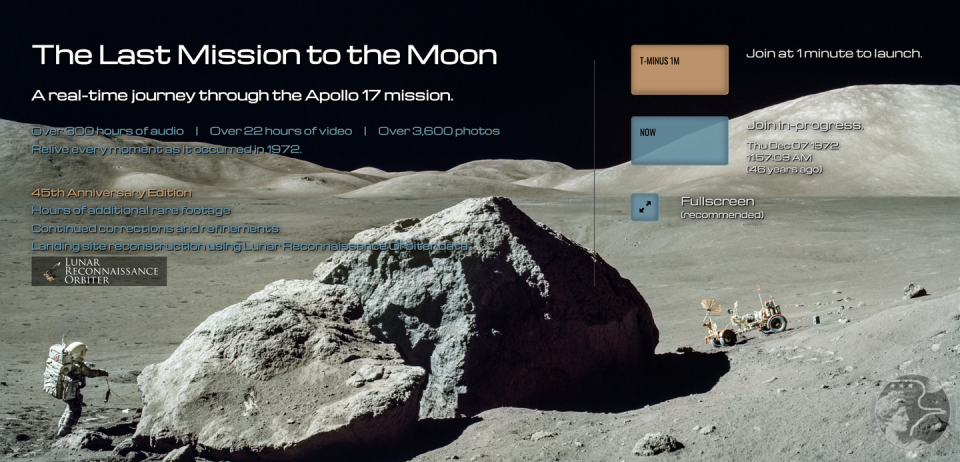
Apollo 17
I really love this website commemorating the Apollo 17 mission, our last crewed mission to the moon. Designer Chris Bennett and NASA software engineer and data visualization whiz Ben Feist compiled pictures, video footage, audio, transcripts, and flight data from the mission into an interactive timeline. You can jump to certain spots during the mission—launch is always exciting, but my favorite part is when the entire crew sings a song to mission control. You really feel like you’re part of the mission.
My only complaint: You have to be a bit careful with the timeline at the top. It’s a bit touchy, so you can easily lose your spot. —Jennifer Leman, News Editor
Google Translate
In 2010, I moved to Munich on a scholarship to study for my senior year thinking I had learned decent enough German in my classes. The reality? I knew precisely zero real-world German. If the Internet was supposed to connect the world, Google Translate certainly helped me connect (and survive) living in a foreign country. Though its accuracy at the time was only slightly better than speaking loudly and slowly at each other, I was able to decipher foreign signs and books without the awkward, “Do you speak english?” In the decade since, it’s become a staple of my internet usage as I try to maintain my German skills and continue traveling overseas each year, and now it’s helping me learn my fourth language! —Pat Heine, Video Producer
PostSecret
In 10th grade, a fellow school newspaper staffer introduced me to PostSecret. It’s a site where people confess their secrets on postcards and mail them in to be posted anonymously. New batches went up on Sundays, and my friend and I would gasp and giggle over them on Mondays. A lot of secrets that got posted were dark and twisty (“cleaning out his apartment was harder than his funeral”), but some were funny (like the Starbucks barista who gives decaf to rude customers). It was before the whole wave of uber-honesty that’s all over the internet these days.
During a super judgey, cliquey time in my life, I found a little bit of comfort from strangers on the internet who also sweated through their ultra-strength deodorant, or whatever. Every so often, I still pop back on there, and there’s always something striking, funny, relatable, and undeniably human. —Riley Missel, Test Editor
YouTube
My first memory of going on YouTube was probably in 2006. I was in eighth grade, and my friend messaged me the link on AIM to Lonely Island’s song, “Awesometown.” I had known YouTube was a thing, but I never had a reason to browse the website until now. And I was instantly entertained. Over the years, my friends and I spent time watching videos that had gone viral. Sure, they were odd, but they seemed to align with my sense of humor—and I spent a lot of time trying to figure out how people came up with these types of things.
As it currently stands, my brain is a constant loop of viral YouTube videos of years past: The woman who reads poetry to her opossum, the woman who was reduced to tears because she just loves cats so much, the song about the duck and the lemonade stand, the “where’s the chapstick” girl—I could go on. Maybe YouTube has turned my brain to mush, and I’d be able to remember so much more if it weren’t for these videos taking up so much space in my head, but I wouldn’t have it any other way. —Danielle Zickl, Associate Health and Fitness Editor
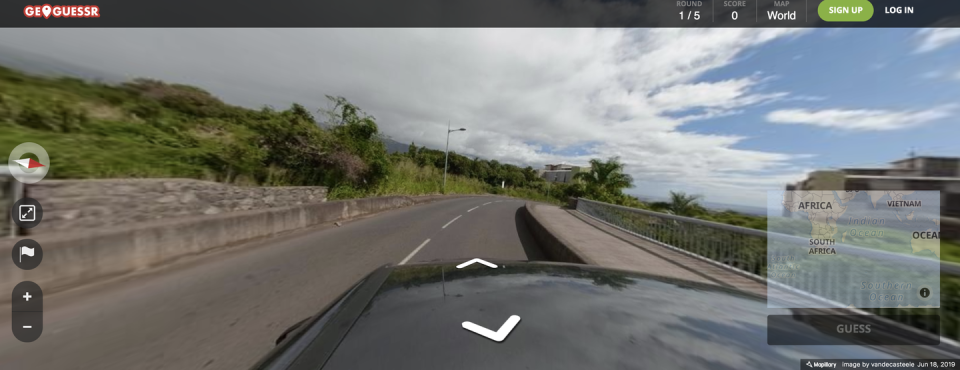
Geoguessr
Remember the first time you saw your own front door on Google Street View? A lot of us probably had this reaction: Okay, it’s amazing that this exists, but that’s … creepy, right? Amazing, but creepy—what could be more internet than that? Making an addictive game out of it, of course.
Launched in 2013, Geoguessr uses Street View to randomly place you somewhere in the world. You get points for how close you guess. Geoguessr has thousands of different maps, and a small community of players on Reddit and Youtube invent new challenges and ways to play. Unfortunately, Google just drastically increased the price of using their API, and Geoguessr responded by making the free version basically unplayable. Instead of paying $2/month, players mostly just ranted about the changes on niche forums. Truly the best of the internet. —John Hamilton, Associate Photo Editor
Cool Math Games
Computer class for kids growing up in the early 2000s was equal parts Microsoft Word, Mavis Beacon typing tests, and—if you were lucky enough to have a cool teacher—Cool Math Games.
The quintessential home for educational games that operated on Adobe Flash, beginning in 1997, Cool Math Games as I remember it had a dark background and a simple list of games on the left rail that took a good five minutes or longer to load. And if you saw an error message asking you to install Flash, good luck! That was going to cost you another 20 minutes, at least.
It was all worth the payoff, though, especially if you got to play the Lemonade Stand game, which taught us young elementary school kids the basics of microeconomics, like consumer demand and where to fix the price of your lemonade relative to the weather.
Thanks to a Change.org campaign that caught steam this past summer and collected over 100,000 signatures, Cool Math Games was saved from the digital dump. Originally, rumors suggested that the site would die along with Adobe Flash Player, but the company behind Cool Math Games has since confirmed the site won’t be going anywhere. Instead, it will focus on converting those wonderful old-school games from Flash to HTML5 so they’ll still function on web browsers that have already begun blocking Flash-dependent websites. This lemonade stand is open for (hopefully) eternal business. —Courtney Linder, Senior News Editor
Homestar Runner
Remember downloading Flash for this animated series? Remember “Strong Bad Email,” where fans would send questions and Strong Bad would rip them apart and Homestar Runner inevitably interfered? The birth of Teen Girl Squad where vapid, poorly drawn stick figure girls went to the mall, crushed on the high school quarterback, babysat, and intermittently suffered gruesome deaths? During the tumultuous early teenage years, my middle school clique inevitably hovered over a Windows XP monitor on a Friday night sleepover, chortling over What’s Her Face’s painful inability to engage with stick figure boys. Meanwhile, we’d be arguing over whose AIM screenname to sign on to, all to craft the perfect away message to capture the attention of our own “Regular Gregs,” “Basketballas,” and “Band Name Boys.” —Caroline Dorey-Stein, Assistant Special Projects Editor
Google Flights
Some of my most cherished memories occurred during trips abroad that all began with a simple search query in my Chrome browser: Google Flights. I love everything about the user interface, how easy it is to simultaneously look up the prices of different destinations across various dates, and how efficient it is to book a flight from start to finish. I’ve been lucky to see so many parts of the world thanks to trips booked on the site. I was a diehard Expedia user until a friend introduced me to Google Flights; I haven’t gone back since. Whenever I plan a trip, this is always my starting point. —Daisy Hernandez, Associate News Editor
You Might Also Like

